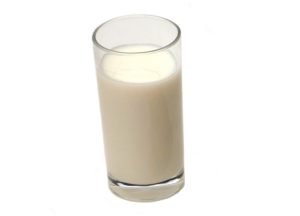Powdered products pulled Tuesday’s Global Dairy Trade lower for the seventh consecutive session, as the weighted average fell 2.9%, which followed the 3.6% plunge July 6.
The losses were led by lactose, down 8.9%, after not trading on July 6. Skim milk powder was down 5.2%, following a 7.0% downfall on July 6, and whole milk powder was down 3.8% after a 3.0% descent.
Butter inched 0.8% lower, after falling 3.2%, and anhydrous milkfat was off 0.3%, after it slipped 0.9% last time.
The good news was Cheddar, up 1.3%, after dropping 9.2% last time.
StoneX Group says the GDT 80% butterfat butter price equates to $1.9554 per pound U.S., down 1.7 cents, and got a little closer to CME butter which closed Tuesday at $1.7125. GDT Cheddar, at $1.8246, was up 3.3 cents, after plunging 17.2 cents last time, and compares to Tuesday’s CME block Cheddar at $1.5850.
GDT skim milk powder averaged $1.3476 per pound, down from $1.4182, or 7.1 cents after losing 10.4 cents last time. Whole milk powder averaged $1.6920 per pound, down from $1.7525 or 6.1 cents. CME Grade A nonfat dry milk closed Tuesday at $1.23 per pound.
StoneX’s Dustin Winston explains that North Asia (which includes China) and Africa were the only regions to purchase less volume today compared to year-ago levels. North Asia also purchased less volume than the last event.
Cheese dropping
CME 40-pound Cheddar block cheese climbed to $1.7525 per pound last Tuesday, highest price since May 13, but then came Wednesday and prices retreated from there. They closed Friday at $1.6150, down 11 cents on the week and $1.0450 below a year ago when they plunged 25.50 cents, after setting a record high of $3.00 per pound on July 13.
The 500-pound barrels got to $1.6475 last Tuesday, highest since June 15, but saw their Friday close at $1.44, down 14 cents and 99 cents below a year ago; 7 cars of block were sold last week at the CME and 27 of barrel.
Traders have their work cut out for them this week trying to second guess what the markets will do. The West has once again been hit with high temperatures and continued drought. Tuesday morning’s GDT was down 2.9%, and the June Milk Production and Cold Storage reports will be issued Thursday afternoon.
The blocks were unchanged Monday with no activity, but dropped 3 cents Tuesday on 2 uncovered offers, to $1.5850.
The barrels were up a penny Monday on a trade but plunged 6.50 cents Tuesday to $1.3850, lowest since Feb. 24, and 20 cents below the blocks; 7 loads traded hands on the day.
Spot milk remains widely available in the Midwest, according to Dairy Market News. Cheese production is busy, but a growing number of cheesemakers are staying clear of the spot milk market as they already have plenty of both. Staffing and labor shortages are becoming more problematic. Foodservice orders from the Eastern region, namely pizza cheese buyers, are keeping Midwestern producers busy, according to DMN.
Western retail and foodservice cheese demand held steady last week and export demand was strong due to the competitive prices. Limited available vessel space and port congestion, however, continues to cause delays. Domestic transportation is not faring much better as contacts report delays and rising prices due to a shortage of truck drivers and difficulties obtaining shipping supplies. Milk continues to be available in the region though output has passed its peak. Cheese output remains busy.
The continued shortage of containers for 640-pound cheese is raising concern on the effect on prices. StoneX speculates: “It would seem if we have an issue with 640s, production will flip to 40s and that would mean more lots available to come to spot but it also likely means that the blocks will remain a bit tighter. That could shift some production to the barrels as well, leaving them a bit over supplied, and could result in a wider block/barrel spread for a period of time.”
CME butter jumped the first two days of last week and hit $1.71 per pound but then reversed gears. It closed Friday at $1.6775, up 0.25 cents on the week and 1.25 cents below a year ago, with 15 sales reported for the week.
The butter gained 3.50 cents Monday and stayed there Tuesday at $1.7125.
Midwest butter plant managers continue to say cream is available but offers are not as hearty as before and during the July 4th weekend. Bulk butter offers are slowing, too, but demand is not viewed as robust. Retail demand remains seasonally quiet, but food service continues to keep plants busy.
Cream availability in the West is constricting to varying degrees. Northwestern contacts say cream is tight after weeks of hotter than usual weather. Fluid haulers are in short supply; when spot loads of cream can even be sourced. Tanker and driver shortages can make for unpredictable delivery timelines. Some butter plants are running reduced schedules due to lighter cream supplies.
Farther south, cream is in better balance but yields are decreasing seasonally though some handlers report California cream is outpacing local needs. Butter inventories are stable to heavier but much is under contract. Retail sales are seasonally softer while food service demand is stable, according to DMN.
Grade A nonfat dry milk saw some ups and downs last week but ended Friday at $1.2525 per pound, 0.25 cents higher on the week and 25.25 cents above a year ago, with 13 trades.
Monday’s powder was up 0.75 cents but then fell 3 cents Tuesday to $1.23 per pound.
Exports are still helping to keep this market above $1.20, says StoneX, with Mexico holding a large role in keeping demand strong.
Dry whey closed Friday at 53.75 cents per pound, up 3 cents on the week and 20.25 cents above a year ago, on 5 sales.
It was unchanged Monday and Tuesday.
Good demand
Dairy demand remains good, according to USDA’s latest data. May total cheese disappearance was down 4.7% from the record set in April, says HighGround Dairy (HGD), but was 1.7% above May 2020, fifth consecutive month to top a year ago, and up 6.1% year to date.
Butter disappearance was up 4.5% from April but 1.0% below a year ago, though year to date is up 4.4%.
Nonfat dry milk and skim milk powder was down 15.4% from April and 21.4% below a year ago. HGD points out that while nonfat dry milk exports jumped to another record high into May, it was not enough to overcome a steep decline in domestic disappearance.
Dry whey was down 11.5% from April, weakest May volume on record due to weak domestic demand, according to HGD, and was 4.6% below a year ago.
Fluid sales down 4.3%
U.S. fluid milk sales continue to falter. USDA’s latest data shows May sales of 3.6 billion pounds of packaged fluid products, down 4.3% from May 2020.
Conventional product sales totaled 3.4 billion pounds, down 3.9% from a year ago. Organic products, at 225 million pounds, were down 10.6%, and represented 6.2% of total sales for the month.
Whole milk sales totaled 1.2 billion pounds, down 9.7% from a year ago, with year to date consumption down 8.3% from a year ago. Whole milk represented 32.4% of total milk sales for the five month period.
May skim milk sales, at 203 million pounds, were down 15.3% from a year ago and down 14.7% year to date.
Total packaged fluid milk sales for the five months amounted to 18.7 billion pounds, down 4.8% from 2020. Conventional product sales totaled 17.5 billion pounds, down 5.1%. Organic products, at 1.2 billion pounds, were down 0.4%, and represented 6.4% of total milk sales for the period.








